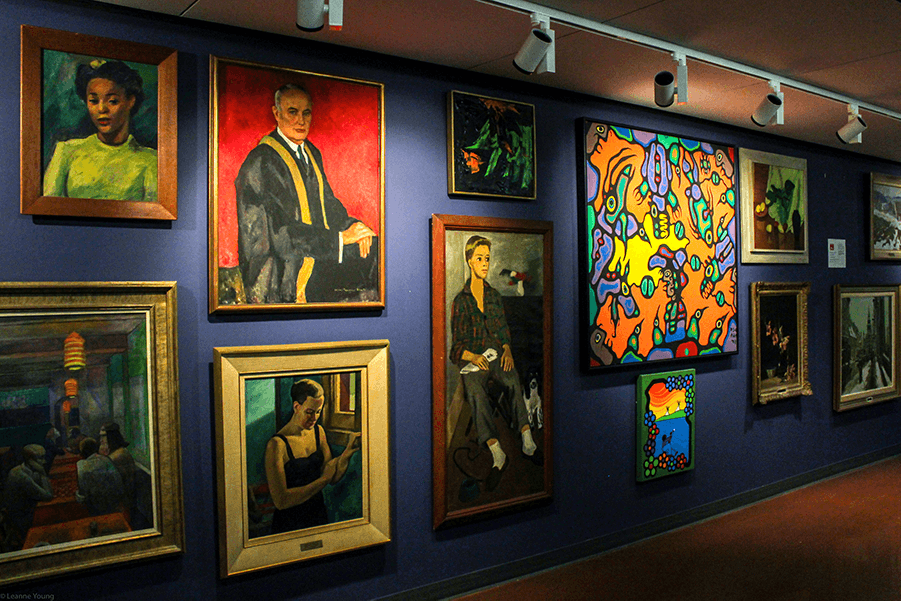Few students are likely aware of the value and history of McGill’s extensive art collection. At a talk hosted by the McGill Library’s Rare & Special Collections, Osler, Art, and Archives (ROAAr), and The Friends of the McGill Library, the collection’s curator Gwendolyn Owens shed some light on the university’s visual arts collection at “If Walls Could Talk: A Short History of McGill’s Art Collection” on Oct. 17.
“The visual arts collection has over 3,000 works of art, we’re on two campuses, plus the Gault Estate, [and] in 90 buildings,” Owens said.
Hailing from every continent but Antartica, objects in the collection range from paintings to tapestries. Some works, Owens admits, might seem strange and out-of-place at a university. While historically significant portraits are a staple in university archives, one may wonder why McGill also has three naked men holding up a shell in front of the Arts Building—the goodwill fountain, also known as The Three Bares, by Gertrude Vanderbilt Whitney.
The sculpture had unlikely origins, unveiled in 1932 in an event marking the friendship between the US and Canada. The Three Bares, carved in Paris in 1913, never made it to the Washington D.C. hotel lobby for which it had been commissioned because the hotel was never built. Instead, the sculpture remained in a New York studio for years until a young graduate of the McGill Music School, Ellen Ballon, met Whitne and proposed the idea of giving the gift to McGill. The unveiling of the sculpture was no small event. In the presence of dignitaries from both countries, the Governor-General of Canada, the Earl of Bessborough accepted the gift from educator and New York Times editor John Finley, presenting the statue on behalf of the Americans.
The first major art donation to the university came in the 1960’s from construction magnate and McGill alumnus Sidney Dawes. His persistent efforts to create the ill-fated McGill Museum of Canadian Art are well-documented in the McGill Library’s journal Fontanus. Dawes’ wish never came to fruition, but his donation set up a foundational Canadian collection for McGill and was the catalyst for creating the arts committee responsible for the collection until Owens’ appointment in 2013.
Despite the art collection’s long history, stretching back to the 1870’s, Owens is McGill’s first full-time art director. While researching the archives, she stumbled upon a letter written in 1946 by Principal Cyril James to Arthur Lismer, a famous painter who also taught sketching to McGill’s architecture students, requesting that he catalogue the university’s art collection.
“I’m pretty sure Lismer declined the task as we don’t have a 1946 catalogue for the collection,” Owens said. “But more than that, [the letter demonstrated] that someone recognized as early as 1946 that [McGill had] a lot of art, and somebody should [create an archive].”
Owens also found evidence of exhibitions showcasing valuable art around campus until well into the 1950’s. Students could showcase paintings on loan from the National Gallery of Canada, for instance, like Tom Thomson’s Northern River
Ownes has been working with collectors and colleagues to expand the collection of Indigenous art, like Nadia Myre’s 2013 series Meditations on Red, which can be found on the main floor of the McLennan library.
Though Arthur Lismer likely declined Cyril James’ request over half a century ago to catalogue McGill’s art collection, Owens and her team are now pursuing this long overdue and worthwhile task.










This Morrisseau painting is a fake. Ask your speaker, Carmen Robertson what she thinks of it…